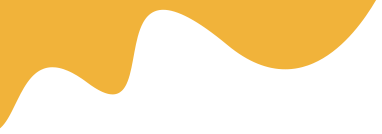Yes, free options like Inkscape can work for basic DTF designs, but they may lack advanced features like precise color profiling, so pairing them with affordable RIP software is recommended for professional results.


Yes, free options like Inkscape can work for basic DTF designs, but they may lack advanced features like precise color profiling, so pairing them with affordable RIP software is recommended for professional results.
Direct-to-Film (DTF) printing has become a go-to method for creating custom apparel and textiles due to its versatility and high-quality results. A crucial part of the DTF process is selecting the right design software. This tool not only helps you create stunning artwork but also ensures compatibility with DTF printers for optimal output. In this article, we'll explore the best design software options for DTF printing, focusing on their features, ease of use, and how they fit into your workflow. Whether you're a beginner or an experienced printer, finding the right software can elevate your DTF projects.
In DTF printing, the design phase sets the foundation for the entire process. Unlike basic printing methods, DTF requires software that can handle complex tasks like layering colors, managing white ink underbases, and preparing files for film output. Good design software allows you to create vector-based artwork, which scales without losing quality, and integrates with Raster Image Processor (RIP) tools for precise printing.
Without proper software, you might face issues like color mismatches or poor adhesion during transfer. The right tools streamline your workflow, saving time and reducing waste. They also support features like spot color management and halftone effects, which are vital for vibrant, durable DTF prints.
There are two main categories of software used in DTF: graphic design software and RIP software. Graphic design tools are for creating and editing artwork, while RIP software processes the design for printing, handling ink layers and color profiles.
Many users combine both types for the best results. Let's dive into top picks for each.
Adobe Illustrator is a powerhouse for vector graphics, making it ideal for DTF designs. Its precision tools allow for intricate patterns and scalable artwork, perfect for apparel. Features like the Pen tool, shape builder, and color swatches help create professional designs quickly.
Pros: Industry-standard, extensive tutorials, integrates with other Adobe apps. Cons: Subscription-based pricing. Best for: Professionals handling complex projects.
CorelDRAW offers robust vector editing with a user-friendly interface. It's great for DTF because of its bitmap tracing and multi-page layout features, which are handy for batch designs.
Pros: One-time purchase option, powerful font management. Cons: Steeper learning curve for beginners. Best for: Small businesses needing versatile tools.
Affinity Designer is a budget-friendly alternative with no subscription fees. It supports both vector and raster editing, making it versatile for DTF artwork preparation.
Pros: Affordable, fast performance. Cons: Fewer advanced plugins. Best for: Beginners and hobbyists.
AcroRIP is specifically designed for DTF and DTG printing. It excels in white ink management and color profiling, ensuring accurate prints on various films.
Pros: Easy to use, affordable. Cons: Limited to certain printer models. Best for: Entry-level DTF setups.
CADlink offers advanced RIP features like queue management and cost calculators, ideal for production environments.
Pros: Comprehensive tools, supports multiple printers. Cons: Higher cost. Best for: High-volume operations.
EKPrint Studio is user-friendly with strong support for DTF-specific tasks like underbase creation and halftoning.
Pros: Intuitive interface, regular updates. Cons: May require additional hardware. Best for: Mid-level users.
When selecting software, consider your skill level, budget, and production scale. Beginners should start with free trials of user-friendly options like Affinity Designer paired with AcroRIP. For professionals, investing in Adobe Illustrator and CADlink can provide long-term value.
Key factors:
Always test software with sample designs to ensure it meets DTF requirements, such as handling transparent backgrounds and spot colors.
To get the most out of your software, focus on high-resolution images (at least 300 DPI) and proper file formats like PNG or EPS. Use layers effectively for color separation, and calibrate your monitor for accurate colors.
Experiment with effects like gradients and textures, but remember DTF excels in detailed, multi-color prints. Regularly update your software to access new features that enhance DTF compatibility.
Choosing the best design software for DTF printing can transform your creative process and output quality. From Adobe Illustrator's precision to AcroRIP's specialized RIP capabilities, these top picks cater to various needs. Start with a tool that matches your experience level and scale up as your DTF business grows. With the right software, you'll achieve professional, eye-catching prints every time.
Look for vector editing tools, color management, and export options like PNG or EPS that support transparency and high resolution, ensuring compatibility with DTF printers and RIP software.
Read MoreRIP software optimizes ink layers, manages white underbases, and handles color conversions, resulting in more accurate, vibrant prints with better adhesion on various fabrics.
Read MoreFor beginners, Adobe Illustrator's subscription might be steep, but its tutorials and tools make it a worthwhile investment if you're serious about creating complex DTF designs.
Read MoreA combination of CorelDRAW for design and AcroRIP for processing is ideal for small businesses, offering affordability and efficiency in handling DTF workflows.
Read More
